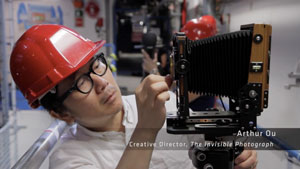Photographic exposures that are insensitive to time — a kind of the opposite of what a digital camera does: keeping track of a history with photographic exposures that completely obliterate time, integrating over weeks, months even… Sounds like dreams of the future? It’s reality, actually, at the Large Hadron Collider at CERN, Geneva, the mega machine meant to help humans understand some of the most basic questions about the nature of our world. Part of this futuristic high-tech mission involves a bit of good old-fashioned (kind of) photography.
This is where project The Invisible Photograph comes in, a documentary series put out by the Carnegie Museum of Art, taking you inside a couple of different projects at the Large Hadron Collider (LHC), both of which use photography in their study of particle physics. And not joking, these videos get so deep, they could turn your brain cells into organic müesli. 24 minutes, totally worth watching.

The Invisible Photograph project, a five-part documentary series, explore the nature of photography in various forms. It investigates the expansive realm of photographic production, distribution and consumption by way of the hidden side of photography — “whether guarded, stashed away, barely recognizable or simply forgotten.”
Because one day even our digital images will disappear. From as far back as the drawings made within the dark interiors of caves, visual images have, from time to time, become “invisible.”
Fantastic series, see all episodes here.


